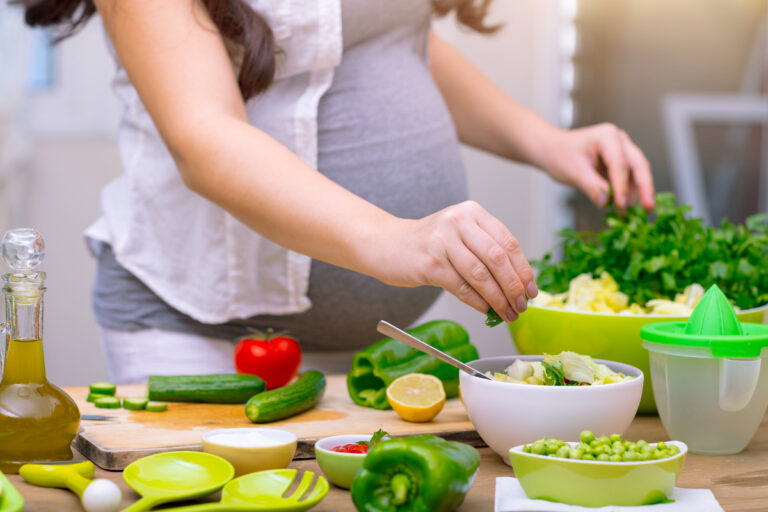If you’re a parent-to-be, you’re probably in your third trimester by now. Congratulations! As your due date rapidly approaches, you may be wondering what to do with yourself. In this blog, we will discuss 10 things to do in your third trimester as you are getting closer day by day to meet your little one. So read on and enjoy these last few weeks before your little baby arrives.
The last phase of pregnancy can be both exhilarating and exhausting. You may feel like you’re running out of time to get everything done before the baby comes. But don’t worry, there’s still plenty of time to enjoy your pregnancy and get ready for parenthood with the ultimate checklist.
Things that should be done in your third trimester
There are many things to checklist in your third trimester. Some of the most important things to be done are as follows:-
1. Make a birth plan
If you haven’t already done so, now is the time to sit down and write out your birth plan. This doesn’t have to be a long, detailed document – simply put down your preferences for things like pain medication, who you want in the delivery room with you, and what kind of delivery you’re hoping for (vaginal or C-section). Having a birth plan will help you to feel more prepared and in control as your due date approaches. You can discuss your preferences with your healthcare provider, and they will help you create a birth plan that’s right for you.
2. Get your nursery ready
If you haven’t already started on it, now is the time to get your nursery set up as it is important for newborns’ sleep. Even if you’re not planning on doing much decorating, you’ll want to at least get the furniture set up so you’re ready when it’s time for the baby’s arrival. If you are decorating, try to keep it simple so you don’t get too overwhelmed. Remember, you can always add more details after the baby comes. If you’re doing it yourself, start with the basics like painting or hanging wallpaper and then move on to putting together furniture and decor. If you’re hiring someone to do it for you, now is the time to start looking for a contractor and getting quotes, and assemble baby gear you want for your little bird.
3. Pack your hospital bag
This is something you’ll want to do in the later stages of your last trimester, probably around 36 weeks. You may not be thinking about going to the hospital just yet, but it’s a good idea to start preparing your list and packing your bag so you’re prepared when the time comes or in case you have any premature labor. As it is better to be ahead of time rather than being late. Include things like comfortable clothes to wear during labor, your birth plan, sanitary pads, and any medications you take on a regular basis. You’ll also want to pack a going-home outfit for yourself and the baby, as well as any essentials you’ll need for the first few days after the birth. Make sure you have everything you need for yourself and the baby.

4. Start thinking about childcare
If you’re planning on going back to work after the baby is born, now is the time to start thinking about childcare. If you’re not sure whether you want to use daycare or a nanny, start doing some research to see what would be the best fit for your family. Talk to other parents and see what their experiences have been like. Once you’ve decided on a childcare option, start making arrangements so everything is ready when the baby comes.
5. Attend a childbirth class
This is something you may have already done in your second trimester, but if not, now is the time to add it to your third-trimester checklist. Childbirth classes will help you to feel more prepared for labor and delivery. They’ll also give you an opportunity to meet other couples who are expecting around the same time as you. If you didn’t take a class in your second trimester, you may still be able to find one that’s offered in your third. It will also help you figure out if it is real labor or Braxton hicks contractions and other pregnancy symptoms. Check with your local hospital or birth center to see what’s available.
6. Choose a pediatrician
If you haven’t already done so, now is the time to choose a pediatrician for your baby make it a priority to add up to your pregnancy checklist. This is someone who will provide your child with medical care regarding the baby’s health from birth through adolescence and also help you throughout your parenting guiding you for a better baby’s growth. You may want to interview a few different pediatricians before making your decision. Ask about their experience, their philosophies on parenting, and what services they offer. Once you’ve chosen a pediatrician, make sure you’re comfortable with them and that they’re someone you feel you can trust.

7. Start thinking about breastfeeding
If you’re planning on breastfeeding, now is the time to start preparing for it. Breastfeeding can be a wonderful experience for both you and your baby, but it takes a little bit of planning and preparation. You may want to attend a breastfeeding class or read some books on the subject. You’ll also want to make sure you have all the supplies you need, such as a breast pump and nursing bras. If you’re planning on going back to work after your baby is born, you’ll need to think about how you’re going to manage breastfeeding and pumping. As a mother’s breast milk is an essential component for a new baby in its growth and development.
8. Tracking pregnancy
In your third trimester, you’ll have more pregnancy-related doctors’ appointments than ever before. You may be seeing your healthcare provider more frequently, and you may also be scheduled for some additional tests and screenings to avoid any uncomplicated pregnancy. It’s important to keep track of all of your appointments so you don’t miss any. You may want to create a calendar or use a pregnancy app to help you keep track of everything. These appointments will not only help you have track of the final weeks but also help in knowing the baby’s position, baby movements, and whether is there a circumstance of late pregnancy or not.
9. Start thinking about your postpartum recovery
Just as you prepared for labor and delivery, you’ll also want to start preparing for your postpartum recovery in the fourth trimester (12 weeks periods just after the delivery of the baby). This is the time when your body is healing and adjusting after giving birth. You may want to take some time to rest and recover at home, or you may choose to go to a postpartum recovery center. Either way, it’s important to have a plan in place so you know what to expect as you may experience high vaginal discharge due to increased blood flow.
10. Install baby car seat
This should be high on your to-do list in the third trimester. You’ll want to make sure you have a safe and reliable baby’s car seat installed before you bring your baby home from the hospital. If it’s your first baby and you’re not sure how to install it, there are plenty of resources available online or you can ask a friend or family member for help. Once you have it installed, make sure you know how to use it properly. You should also practice getting in and out of the car with the seat to make sure you can do it quickly and easily when the time comes.
11. Stay healthy
Lastly, one of the most important things you can do in your third trimester is to stay healthy and just not focus on the baby growth & health but also on your own health. This means eating a balanced diet, getting enough rest, and staying active. Exercise is especially important in your third trimester, as it can help improve your circulation and reduce stress. Walking is a great way to stay active, and there are many pregnancy-specific exercises you can do as well. Be sure to talk to your healthcare provider before starting any new exercise routine.
These are just a few things you should do in your third trimester. Of course, every pregnancy is different, so be sure to talk to your healthcare provider about what’s best for you. And don’t forget to enjoy this last special time of your pregnancy week.
Things to keep in mind in your third-trimester pregnancy
Here are 10 things you can do to help manage some of the common third-trimester pregnancy symptoms:
- Get plenty of rest. This will help your body cope with the added stress of pregnancy and prepare for labor. Having more and more sleep rather than being sleep deprived because of stress as the day come’s closer it will also make your body ready.
- Drink plenty of fluids. This will help prevent dehydration, which can make some symptoms worse.
- Eat small, frequent meals. This will help prevent nausea and vomiting. Also, have prenatal vitamins if needed.
- Avoid standing for long periods of time. This will help reduce swelling in the hands and feet.
- Wear comfortable shoes. This will help reduce foot and ankle pain.
- Exercise regularly or home stretch or body. This will help improve circulation and reduce some of the aches and pains associated with pregnancy.
- Avoid constipation. This will help prevent hemorrhoids, which can be painful.
- Check your blood pressure regularly. This will help you monitor your health and look for any potential problems.
- Attend all prenatal appointments. This will help your healthcare provider keep track of your progress and identify any potential problems and the baby’s movements and baby’s head position inside the womb.
- Stay positive. This will help you manage stress and anxiety, both of which can make some symptoms worse.
What To avoid doing in the third trimester?
There are a few things to avoid doing in the third trimester in order to stay healthy and comfortable.
- Excessive weight gain: You should only gain around 10-15 pounds during your third trimester. If you gain more than that, it can be difficult to lose weight after delivery.
- Drinking alcohol: Alcohol can lead to Fetal Alcohol Syndrome, which can cause birth defects.
- Smoking: Smoking increases the risk of miscarriage, preterm labor, and low birth weight.
- Drugs usage: Illegal drugs can cause birth defects, preterm labor, and low birth weight.
- Exposure to toxins Certain toxic chemicals and pollutants can be harmful to the developing baby and as a result, many babies that have come into contact with such substances have grown with birth defects.
- Avoid stress: Stress can lead to preterm labor and low birth weight.
- Hot tubs and saunas: High temperatures can be harmful to the developing baby.
- Strenuous activity: Too much activity can lead to preterm labor.
- Lying on your back: Lying on your back for extended periods of time can decrease blood flow to the baby.
These were some of the points that should be kept in mind during the third trimester and should be strictly avoided for better health and development of the baby.
What are third-trimester symptoms that shouldn’t be ignored?
Many third-trimester symptoms are normal, but there are a few that shouldn’t be ignored. Here are some of the most important ones:
- Vaginal bleeding
- Severe headache or blurred vision
- Pain in the lower back or abdomen
- Swelling in the hands, feet, or face
- Rapid heartbeat or breathing
- Leaking amniotic fluid
If you experience any of these symptoms, please contact your doctor right away. Early diagnosis and treatment are critical for a healthy pregnancy.
The Final Word
The third trimester is a time of great change. You have to plan everything before the baby arrives. From preparing the nursery to your hospital bag, everything must be done in advance. You also have to take care of yourself both physically and emotionally. Moreover, avoid any activities that might be harmful to you or the baby. As your body is preparing for labor and delivery, also your baby is growing rapidly. Be sure to get plenty of rest, eat healthy meals, and avoid stressful situations. If you have any concerns, don’t hesitate to speak to your doctor. With proper care, you and your baby will be ready for the big day!
Hope this blog provided you with enough parental information for your third-trimester pregnancy checklist. Stay tuned with us for more such content. And, don’t forget to share your feedback in the comment section below.










